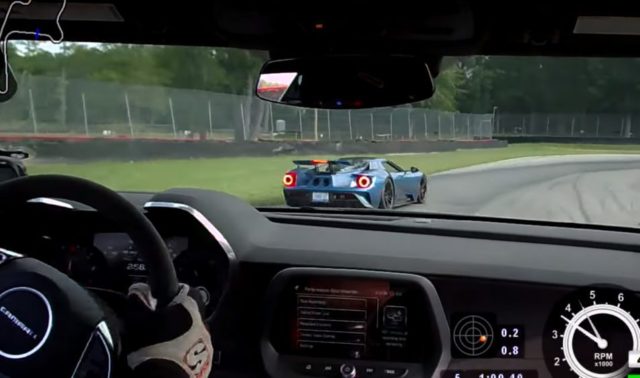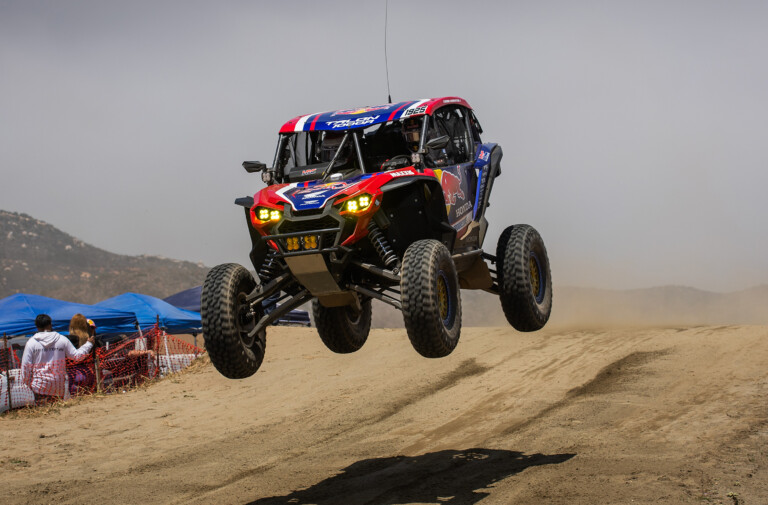Though these two make similar levels of power, their performances on track are quite different. The big, burly Camaro makes an additional 100 lb-ft, but also adds a not-inconsiderable 800 pounds, and as a result, isn’t quite the scalpel the carbon-tubbed GT is.
Initial impressions? The two run evenly in a straight line. Eventually the brickish frontal area of the Camaro slows its progress, but the two are even at corner exit. Though the rigidity and engine location should give the Ford a traction advantage, the Chevy can match it out of every corner.
Now, obviously these two are driven well below their limit, which isn’t something easily reached by mere mortals; the ZL1’s onboard footage at the Nurburgring supports this. The Chevy also wears high-dollar Multimatic spool-valve dampers and 305-section front tires to equal the field in terms of entry speeds, but the Ford is undeniably nimbler. Just revel in how quickly the mid-engined marvel rotates into Mid-Ohio’s Turn 5, where the Chevy’s tires are howling. As a result, the Ford is able to extend the gap briefly, but only for a bit.
Give the cars some room to play at the gap narrows. With a clear track ahead, the ZL1, in this man’s hands, monsters Mid-Ohio. It’s incredible what something with a base price of $62,000 can manage these days. It’s probably for that reason, the owner of the GT let him by. Spending half a million on a supercar may come with plenty of perks, but it also puts the ego on shaky ground from time to time.






















